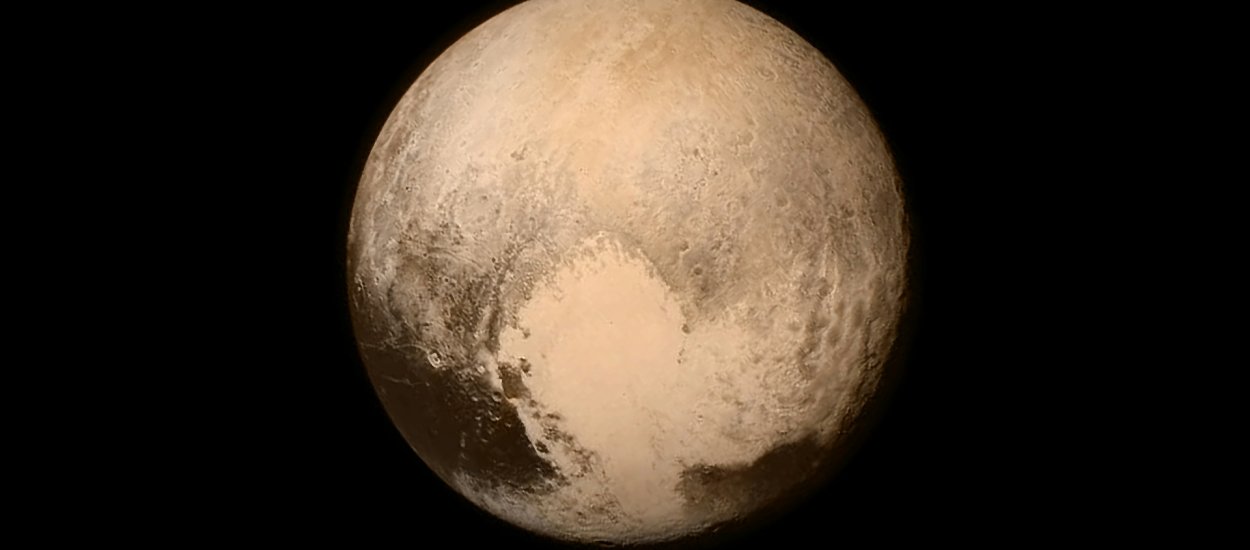There are many bold ideas for missions into space. One such event that arouses great interest is the landing on Pluto. This idea may seem a bit crazy to people outside the scientific community, although it has the support of NASA’s NIAC team. The institute has funded research on this particular project twice, in 2017 and 2021.
In the context of a mission to Pluto, two main questions arise: how will the probe slow down as it approaches the dwarf planet, and what type of lander is best suited to its surface. In the first case, you can use so-called pneumatic braking. The New Horizons mission, which flew by Pluto in 2015, confirmed the presence of an atmosphere around the planet. Although they are very rare, their low density and volume (about eight times that of Earth’s atmosphere) make them suitable for using this technology.
Much of NIAC’s research has focused on developing the Enveloping Aerodynamic Decelerator system.. In combination with the lander, this system forms the “Entrycraft” module. This project could also include an orbiter, but in this case the main focus is on the lander. After slowing down to several tens of meters per second (from an initial speed of 14 kilometers per second), the spacecraft will descend to the surface of Pluto and rise again thanks to its own engines.
The expected type of lander leads us to the concept of… hoppers. These types of modules are becoming increasingly popular in space exploration, from the Moon to asteroids. Its advantage is the ability to move between different places on the surface, avoiding the problem of terrain obstacles. Take the Ingenuity helicopter accompanying the Perseverance rover on Mars, for example, but in the case of Pluto, hopper launch vehicles seem more suitable because of the thin atmosphere.
Hopper on Pluto would use rocket engines to move between different points on the surface, which would enable truly comprehensive scientific research. NIAC’s Phase I final report identified the mission’s five main science objectives, including surface geomorphology and in situ chemical analysis. Hoppers will be more effective than rovers, mainly due to Pluto’s lower gravity.


Other research objectives included conducting detailed mathematical calculations related to the flight path, air braking, and pressures of the materials used in the system. Updating models of Pluto’s atmosphere with data from the New Horizons mission was also an important part of the research effort.
The mission was originally supposed to launch in 2029. However, given the current pace of work and new timelines, the most realistic launch date seems to be… 2042, which means the lander will reach Pluto in the 2050s. It turns out that I will reach the age of 60, when everything will be in full swing. If the samples are obtained, we will likely have to return them to Earth, and that will take several years. Knowing that the samples could reach our planet the moment they put me in the dirt is surreal. But on the other hand, I will miss out on a lot of other discoveries and research.

Echo Richards embodies a personality that is a delightful contradiction: a humble musicaholic who never brags about her expansive knowledge of both classic and contemporary tunes. Infuriatingly modest, one would never know from a mere conversation how deeply entrenched she is in the world of music. This passion seamlessly translates into her problem-solving skills, with Echo often drawing inspiration from melodies and rhythms. A voracious reader, she dives deep into literature, using stories to influence her own hardcore writing. Her spirited advocacy for alcohol isn’t about mere indulgence, but about celebrating life’s poignant moments.








